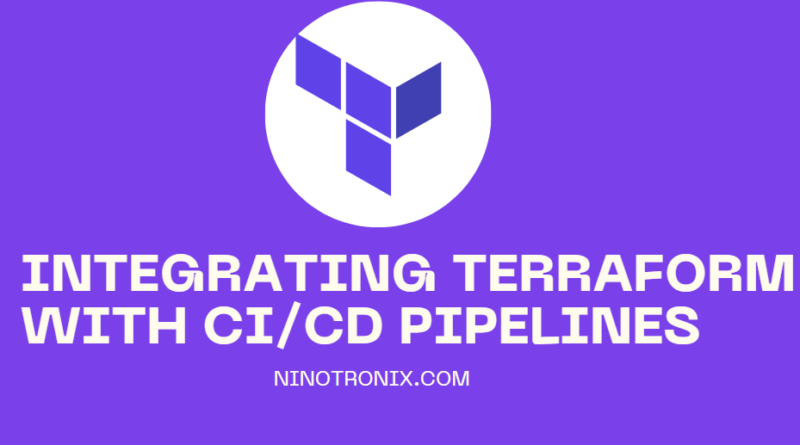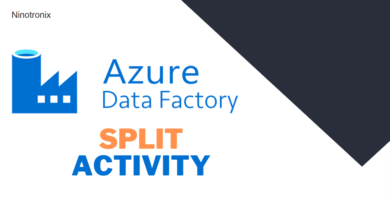Integrating Terraform with CI/CD Pipelines for Efficient Infrastructure Delivery
Terraform is an open-source infrastructure as code (IaC) tool that enables users to define and manage their cloud infrastructure using declarative configuration files. By automating infrastructure deployment, Terraform reduces the risk of human error and streamlines the process of creating and modifying cloud resources. In this article, we’ll explore how to integrate Terraform with CI/CD pipelines for efficient infrastructure delivery.
Continuous Integration and Continuous Deployment (CI/CD) is a methodology that emphasizes the automation of software delivery processes. It involves building, testing, and deploying code changes in a consistent and repeatable manner. When using Terraform, the same principles can be applied to infrastructure delivery.
The first step in integrating Terraform with a CI/CD pipeline is to define the infrastructure using Terraform configuration files. These files describe the desired state of the infrastructure, and Terraform uses them to create and manage cloud resources. Once the configuration files have been created, they can be version controlled and stored in a source code repository, such as Git.
Next, the CI/CD pipeline must be configured to use Terraform to deploy the infrastructure. This involves creating a build script that invokes Terraform commands to create or modify cloud resources. The build script should be designed to run automatically whenever changes are made to the Terraform configuration files in the source code repository.
One important consideration when using Terraform in a CI/CD pipeline is to ensure that the correct version of Terraform is installed on the build server. Terraform updates frequently and older versions may not support the latest cloud providers or features. Therefore, it’s important to specify the Terraform version in the build script and ensure that the correct version is installed on the build server.
Another important consideration is to ensure that the build script handles errors gracefully. Terraform commands can fail for various reasons, such as network connectivity issues or cloud provider errors. The build script should be designed to handle these errors and roll back changes if necessary.
In addition to the build script, the CI/CD pipeline should also include automated testing of the infrastructure. This involves running tests that validate the infrastructure’s behavior and performance. These tests can be implemented using various tools, such as infrastructure validation frameworks or cloud provider-specific testing tools.
One of the key benefits of using Terraform in a CI/CD pipeline is that it enables infrastructure changes to be deployed quickly and reliably. Terraform configuration files provide a single source of truth for the infrastructure, which makes it easier to manage changes and ensure consistency across environments. By automating infrastructure deployment and testing, Terraform and CI/CD pipelines also reduce the risk of errors and downtime.
Finally, it’s important to continuously monitor the infrastructure after it has been deployed. This involves tracking performance metrics and identifying any issues that may arise. Various monitoring tools can be used for this purpose, such as CloudWatch or Prometheus.
In conclusion, integrating Terraform with CI/CD pipelines can greatly improve the efficiency and reliability of infrastructure delivery. By automating infrastructure deployment and testing, Terraform and CI/CD pipelines enable rapid and consistent changes to be made to cloud resources. To ensure success, it’s important to design a build script that handles errors gracefully, specify the correct Terraform version, and implement automated testing and monitoring of the infrastructure.
Example
Suppose we have a web application that runs on an AWS EC2 instance and uses an RDS MySQL database. We want to deploy changes to the infrastructure quickly and reliably using Terraform and a CI/CD pipeline.
- Define the infrastructure using Terraform configuration files
We create Terraform configuration files that describe the desired state of the infrastructure. For example, we might create an EC2 instance resource and an RDS MySQL database resource. We can also define other resources such as security groups, subnets, and load balancers as needed.
Here is an example of the Terraform configuration file for the EC2 instance:
resource "aws_instance" "web_server" {
ami = "ami-0c55b159cbfafe1f0"
instance_type = "t2.micro"
subnet_id = "${aws_subnet.public_subnet.id}"
security_group_ids = ["${aws_security_group.web_sg.id}"]
tags = {
Name = "web-server"
}
}
- Store the Terraform configuration files in a source code repository
We store the Terraform configuration files in a source code repository, such as Git. This allows us to version control the infrastructure code and collaborate with other team members.
- Configure the CI/CD pipeline to use Terraform to deploy the infrastructure
We configure the CI/CD pipeline to use Terraform to deploy the infrastructure. This involves creating a build script that invokes Terraform commands to create or modify cloud resources. We also specify the Terraform version to use and ensure that it is installed on the build server.
Here is an example of the build script:
#!/bin/bash
set -e
# Specify the Terraform version to use
export TF_VERSION=0.14.10
# Install Terraform if it's not already installed
if ! [ -x "$(command -v terraform)" ]; then
curl -O https://releases.hashicorp.com/terraform/${TF_VERSION}/terraform_${TF_VERSION}_linux_amd64.zip
unzip terraform_${TF_VERSION}_linux_amd64.zip
sudo mv terraform /usr/local/bin/
fi
# Initialize Terraform
terraform init
# Apply the Terraform configuration
terraform apply -auto-approve
- Implement automated testing of the infrastructure
We implement automated testing of the infrastructure to validate its behavior and performance. This can involve using infrastructure validation frameworks or cloud provider-specific testing tools. For example, we might use the AWS Command Line Interface (CLI) to test the connectivity to the RDS MySQL database.
Here is an example of a test script:
#!/bin/bash
set -e
# Test the connectivity to the RDS MySQL database
aws rds describe-db-instances --db-instance-identifier mydbinstance --query "DBInstances[0].Endpoint.Address" | grep -q "\."
- Monitor the infrastructure after deployment
We monitor the infrastructure after deployment to track performance metrics and identify any issues that may arise. This can involve using monitoring tools such as CloudWatch or Prometheus.
Here is an example of a CloudWatch dashboard that displays the CPU utilization and network traffic for the EC2 instance:
By integrating Terraform with a CI/CD pipeline, we can deploy changes to the infrastructure quickly and reliably. The Terraform configuration files provide a single source of truth for the infrastructure, which makes it easier to manage changes and ensure consistency across environments. By automating infrastructure deployment and testing, Terraform and CI/CD pipelines




